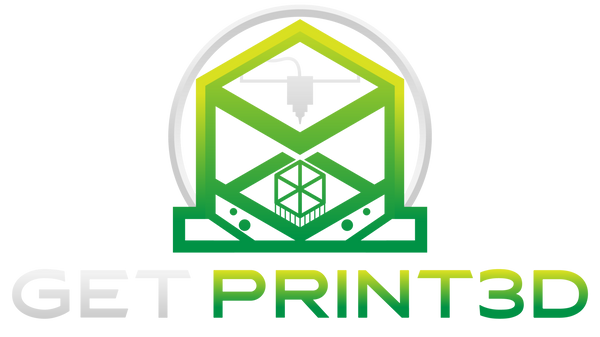How FDM 3D Printers Work: A Complete Guide
Introduction
FDM (Fused Deposition Modeling) is one of the most popular 3D printing technologies. It’s widely used by hobbyists, educators, and even professionals for creating prototypes and functional parts. In this guide, we’ll break down how FDM 3D printers work, with both simple and advanced explanations. Whether you're new to 3D printing or want to dig into the details, this post has you covered.
What is FDM 3D Printing?
📝 Simple Explanation:
FDM 3D printing is like building a structure with a hot glue gun, layer by layer. The printer heats up a plastic filament until it melts, then precisely lays it down in thin lines. By stacking these lines layer by layer, the printer gradually forms a 3D object.
⚙️ Advanced Explanation:
FDM (also called Fused Filament Fabrication or FFF) works by extruding thermoplastic filaments through a heated nozzle. The printer interprets a digital 3D model (usually in .stl or .gcode format), which is sliced into hundreds or thousands of horizontal layers. The nozzle follows a path determined by the slicing software, depositing molten plastic, which solidifies quickly, layer upon layer, to form the final object.
Key Components of an FDM Printer
1. Filament
Simple: Filament is the spool of plastic used as “ink” for 3D printing. Popular types include PLA, ABS, PETG, and TPU.
Advanced: Filaments are thermoplastics, meaning they soften when heated and harden when cooled. Different filaments have different melting temperatures and properties (strength, flexibility, and durability).

2. Extruder and Hotend
Simple: The extruder pushes the filament into the hotend. The hotend heats the filament until it melts, then the nozzle lays down the melted plastic.
Advanced: The extruder uses a stepper motor to feed the filament. The hotend has a heating element (typically a ceramic heater) and a temperature sensor (thermistor) to precisely control the heat. The nozzle diameter (commonly 0.4mm) determines the thickness of the extrusion.

3. Build Plate
Simple: The build plate is where the 3D printed object is built. Some plates are heated to prevent the print from warping.
Advanced: The build plate is typically made of glass, aluminum, or specialized materials like PEI. A heated build plate (commonly set between 50°C and 100°C) helps improve bed adhesion and minimizes warping, especially for materials like ABS.

4. Stepper Motors and Axes
Simple: Motors move the nozzle and build plate to the right positions so the plastic can be laid down accurately.
Advanced: Stepper motors control movement along the X, Y, and Z axes. The X and Y axes handle horizontal movement, while the Z axis controls vertical movement. Many printers use belts for X and Y movement and threaded rods for the Z axis.
5. Cooling Fan
Simple: A fan helps cool the melted plastic quickly so the next layer can be added smoothly.
Advanced: Cooling is crucial for maintaining the shape and quality of the print. For PLA and similar materials, a part-cooling fan directs airflow right at the freshly extruded plastic, ensuring it hardens quickly to prevent drooping or deformation.
Step-by-Step Process of FDM 3D Printing
📝 Simple Explanation:
- Design the Model: Create a 3D model using software like Blender, Tinkercad, or Fusion 360.
- Slice the Model: Use slicing software (like Cura or PrusaSlicer) to turn the model into instructions for the printer.
- Load Filament: Insert the plastic filament into the printer.
- Print the Object: The printer heats the filament and lays it down layer by layer until the object is complete.
- Remove and Finish: Once done, remove the object and clean it up if needed.
⚙️ Advanced Explanation:
-
3D Modeling: The process starts with a 3D model designed in CAD software. The model is exported as an STL file, a format that represents the surface geometry of the object.
-
Slicing: The STL file is imported into a slicer program, which converts the 3D model into layers. The slicer generates G-code, which contains instructions for the printer’s movements, temperatures, and speeds.
-
Filament Loading: The filament is fed into the extruder, which grips and guides it into the hotend.
-
Printing: The hotend heats the filament to its melting point (e.g., 200°C for PLA). The extruder pushes the filament through the nozzle, and the printer deposits plastic layer by layer based on the G-code instructions.
-
Cooling and Solidifying: The cooling fan helps solidify each layer. Good cooling is essential for sharp details and overhangs.
-
Completion and Post-Processing: Once finished, the print is carefully removed from the build plate. Post-processing may involve sanding, painting, or assembling parts.
Conclusion
FDM 3D printing is an accessible and versatile way to bring your ideas to life, whether you're printing prototypes, art, or functional tools. Understanding the basic components and process makes it easier to troubleshoot issues and improve your prints. Whether you’re just starting out or looking to refine your skills, there’s always more to explore in the world of 3D printing!

